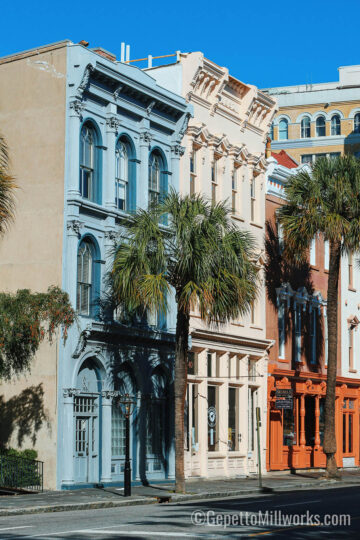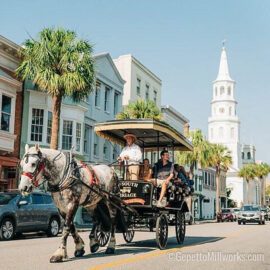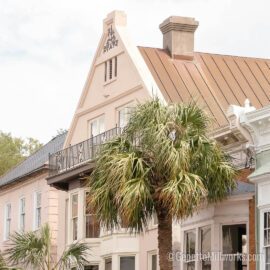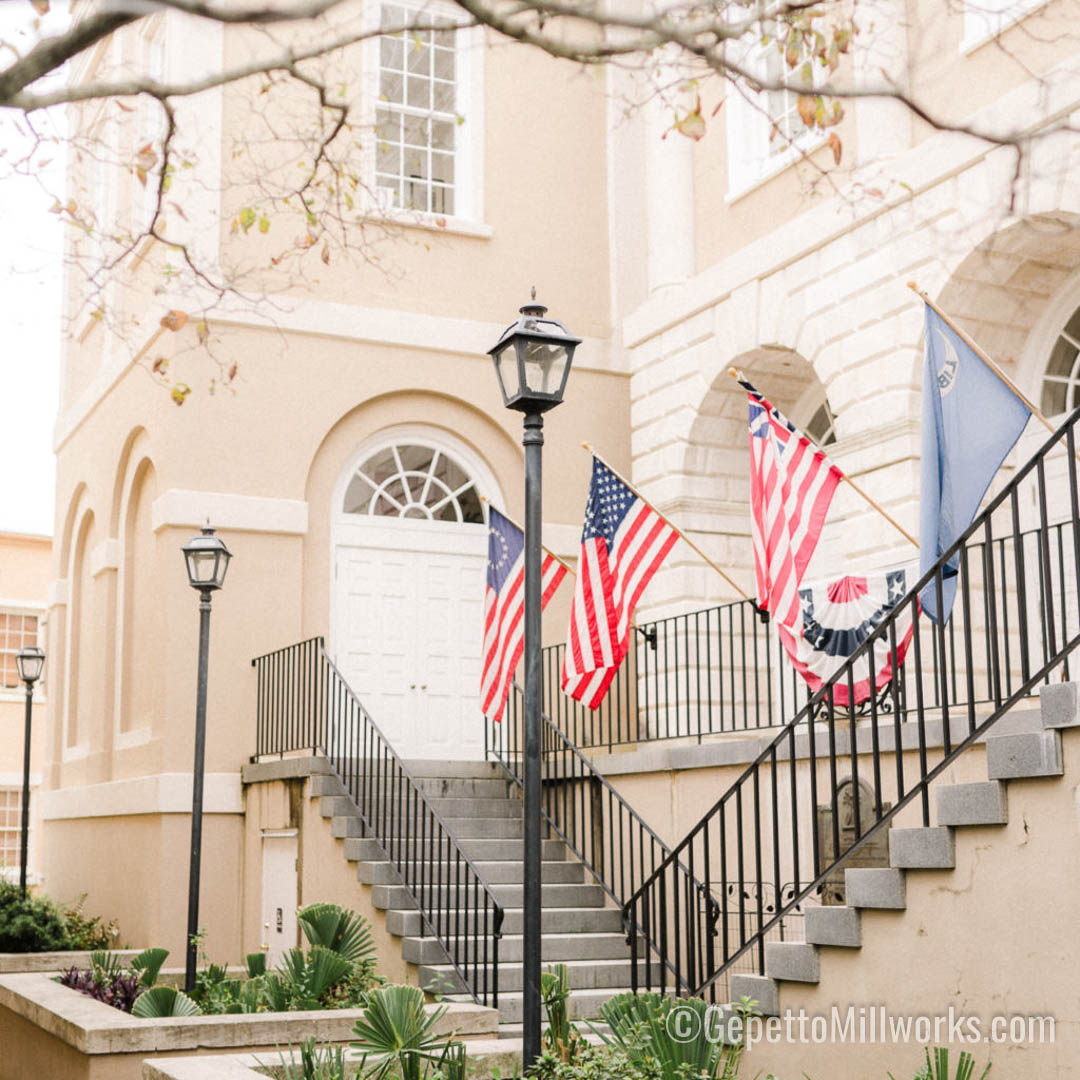Charleston SC Historic Window Contractor
Charleston, South Carolina, where history whispers through the cobblestone streets and antebellum architecture stands as a testament to times past, there exists a delicate balance between preserving the past and embracing the future. At Gepetto Millworks, we are honored to play a pivotal role in this narrative as expert historic window restorers, serving the illustrious historic districts and buildings that define Charleston’s unique charm.
The Charleston Aesthetic: A Tapestry of Time
 Charleston’s architectural landscape is a tapestry woven with threads of history, each building telling it’s story of the city’s rich past. From the elegant mansions of the Battery to the charming row houses of Rainbow Row, every structure holds a piece of Charleston’s identity. At the heart of this identity is the architectdural charm of periods standing next to each other. In each of these historic periods windows serve as both portals to the past and guardians showing our architectural heritage in “South of Broad“, “French Quarter“, “Harleston Village“, “The Boroughs” or “Historic Business District“.
Charleston’s architectural landscape is a tapestry woven with threads of history, each building telling it’s story of the city’s rich past. From the elegant mansions of the Battery to the charming row houses of Rainbow Row, every structure holds a piece of Charleston’s identity. At the heart of this identity is the architectdural charm of periods standing next to each other. In each of these historic periods windows serve as both portals to the past and guardians showing our architectural heritage in “South of Broad“, “French Quarter“, “Harleston Village“, “The Boroughs” or “Historic Business District“.
As expert historic window restorers, we understand the intrinsic value of these windows beyond functionality. They are works of art in their own right, crafted with precision and care by skilled artisans of the eras they were built in. From intricate woodwork to delicate stained glass, each window embodies the craftsmanship and aesthetic sensibilities of its time. Take yourself back to that period and realize how much work went into each delicate mullion or muntin as it was created. Each skilled craftsman of the period would have hewn the profiles using the strength of his own arms, and hand tools on a workbench. Sawing each miter joint and dedicating the time an attention to a window that has lasted hundreds of years.
The Role of Charleston SC Historic Window Contractor
Preserving Charleston’s historic windows is not merely an act of maintenance; it is a commitment to honoring the city’s heritage and ensuring its legacy for future generations. At Gepetto Millworks, we approach historic window restoration with the utmost reverence and attention to detail, employing traditional techniques and materials to breathe new life into these architectural treasures. You don’t want to choose a wood species that is not purposed for timeless standards! We meet and exceed modern quality and structural standards in all wood windows we build from scratch to match historic standards.
Our restoration process begins with a meticulous assessment of each window’s condition, taking into account factors such as age, material, and architectural significance. From there, our team of skilled craftsmen carefully disassemble the windows, salvaging original components when possible and recreating missing elements with precision craftsmanship.
The Economic Case for Historic Window Restoration
While the preservation of Charleston’s historic windows is undoubtedly a labor of love, it is also a sound financial investment for building owners and developers. Beyond the intrinsic value of maintaining the city’s architectural heritage, there are tangible economic benefits to be gained from investing in historic window restoration, particularly in the form of aesthetic and historic tax credits.
French Quarter Aesthetic Value
Charleston’s historic windows are more than just functional elements of a building; they are architectural features that contribute to its overall aesthetic appeal. Restoring these windows to their original look and function enhances the visual character of a property, increasing its curb appeal and market value. Whether it’s the intricate muntin patterns of a Georgian-style window or the colorful panes of a Victorian bay window, historic windows add a touch of elegance and charm that modern replacements simply cannot replicate. 2,500 historic buildings in the Charleston area traverse eight distinct architectural styles throughout the Lowcountry including Colonial (French, Spanish & British), Georgian, Federal, Classical Revival, Gothic Revival, Italianate, Victorian, and Art Deco.
Harleston Village Historic Tax Credits
In addition to their aesthetic value, historic windows also offer substantial financial incentives in the form of historic tax credits. The Federal Historic Preservation Tax Incentives program, administered by the National Park Service, provides a 20% tax credit for the rehabilitation of certified historic structures, including the restoration of original windows. In South Carolina, the state offers an additional 10% tax credit for qualifying rehabilitation expenses, further incentivizing investment in historic preservation projects.
Case Studies:
The Economic Impact of Historic Window Restoration
To illustrate the economic benefits of historic window restoration, let us examine two hypothetical case studies of building owners in Charleston’s historic districts. If you need to quantify it – look no further than the tourism dollars that are spent annually in historic charleston. You can do a wonderful walking tour guilded by architectural period as an example of how valuable for tourism the history remains. As a development or financial comparison find the property values using a property that was demolished and rebuilt – next to an historic property and note the difference.
Case Study 1: Residential Renovation
A homeowner in the historic district of Harleston Village, recently purchased a charming Victorian-era house in need of renovation. The original windows, while structurally sound, had deteriorated over time, detracting from the home’s curb appeal and weathertight function. After consulting with Gepetto Millworks, they decided to invest in the restoration of her home’s windows as part of her renovation project.
By restoring the windows to their original condition, they not only enhanced the aesthetic appeal of her home but also qualified for both federal and state historic tax credits. With a total project cost of $55,000 for window restoration, Sarah was eligible for a $15,000 tax credit, reducing her overall investment to $35,000. In addition to the tax benefits, Sarah’s home saw a significant increase in market value, making her investment in historic window restoration a wise financial decision. Matt Wiley can help guide you and qualify you for the historic tax credit funds.
Case Study 2: Commercial Redevelopment
A developer with a passion for historic preservation, purchased a historic storefront building in Charleston’s French Quarter with plans to convert it into a mixed-use development. The building’s original windows, dating back to the early 19th century, were in need of extensive restoration to bring them back to their former glory.
Working closely with their Architect who specified Gepetto Millworks, they embarked on a comprehensive restoration project that not only preserved the building’s historic windows but also enhanced its overall aesthetic appeal while raising two more stories exapanding the usable space in the same style. By leveraging federal and state historic tax credits, John was able to offset a significant portion of the project’s costs, making the investment in historic window restoration financially viable and demonstrating to zoning, planning and related checks and balances that the new part of the build would be the same character as the original.
Upon completion of the redevelopment project, the building’s historic windows contributed to the authenticity of its streetside presentation, attracting tenants and customers alike. The restored windows contributed to the building’s visual appeal but also kept that warm embrace of history as the public walks by in daily life.
In Charleston, where history is woven into the fabric of everyday life, the preservation of historic windows is more than just a practical necessity; it is a sacred duty. As expert historic window restorers at Gepetto Millworks, we take pride in our role as custodians of Charleston’s architectural heritage, ensuring that its legacy endures for generations to come.
For building owners and developers, investing in historic window restoration is not only a sound financial decision but also a testament to their commitment to preserving Charleston’s unique charm. From aesthetic enhancements to historic tax credits, the economic benefits of historic window restoration are clear, making it a wise investment for any building or remodeling project in Charleston’s historic districts.
As we continue our mission to safeguard Charleston’s architectural legacy, we invite building owners and developers to join us in preserving the city’s historic windows for future generations to cherish and enjoy. Together, we can ensure that Charleston’s charm remains as timeless as its history.




Virginia Window Restorers
- Richmond VA Window Rehabilitation
- Alexandria Old Window Restorers
- Charlottesville Restoration Services
- Fredricksburg Window Experts
- Norfolk Historic Window Repair
- Harrisonburg Window Rot Rescue
- Staunton VA Window Rehabilitation
- Lexington VA Window Contractor
- Roanoke VA Rehabilitation Contractor
- Lynchburg VA Historic Window Services
- Washington DC Historic Windows
- Portsmouth VA Old Window Restorer
- Arlington VA Historic Window Builder
Historic Replica Windows Made to Order
Southeast US Window Rehabilitation
- Greensboro NC Window Restoration
- Durham NC Wood Window Repair
- Raleigh NC Historic Window Rehabilitation
- Outer Banks Historic Home Restorers
- Henderson NC Window Rot Repair
- Winston Salem NC Rehabilitation
- Columbia SC Historic Window Restorer
- Spartansburg SC Wood Window Builder
- Charleston SC Historic Window Contractor
- Savannah GA Historic Window Services
- Ashville NC Old Window Restorer
- Virginia Wood Window Restoration
